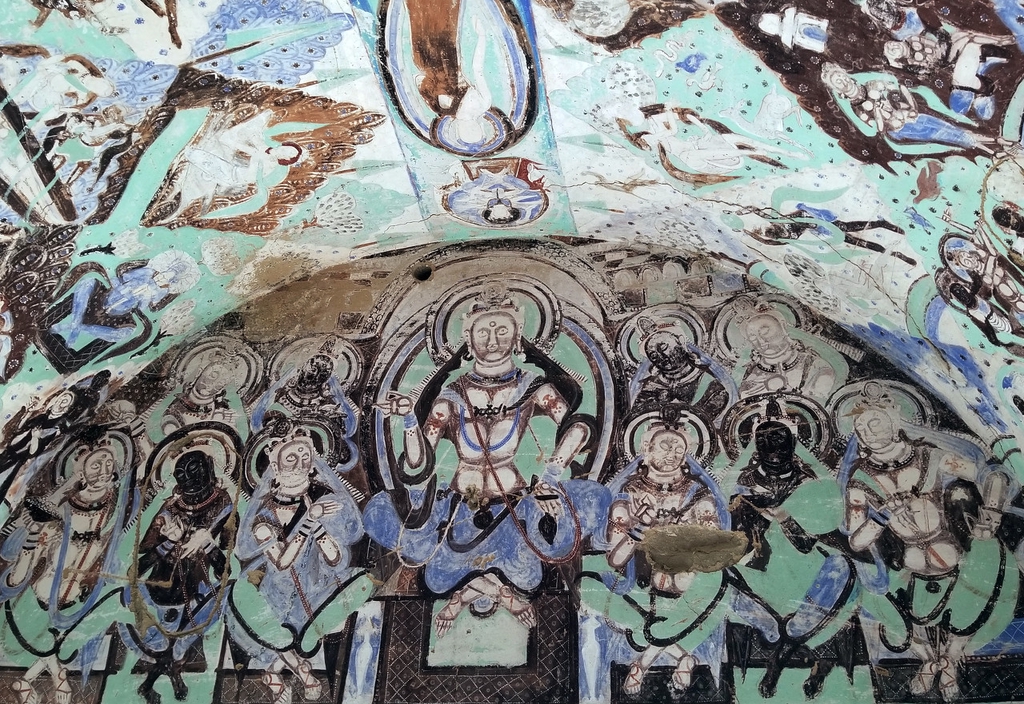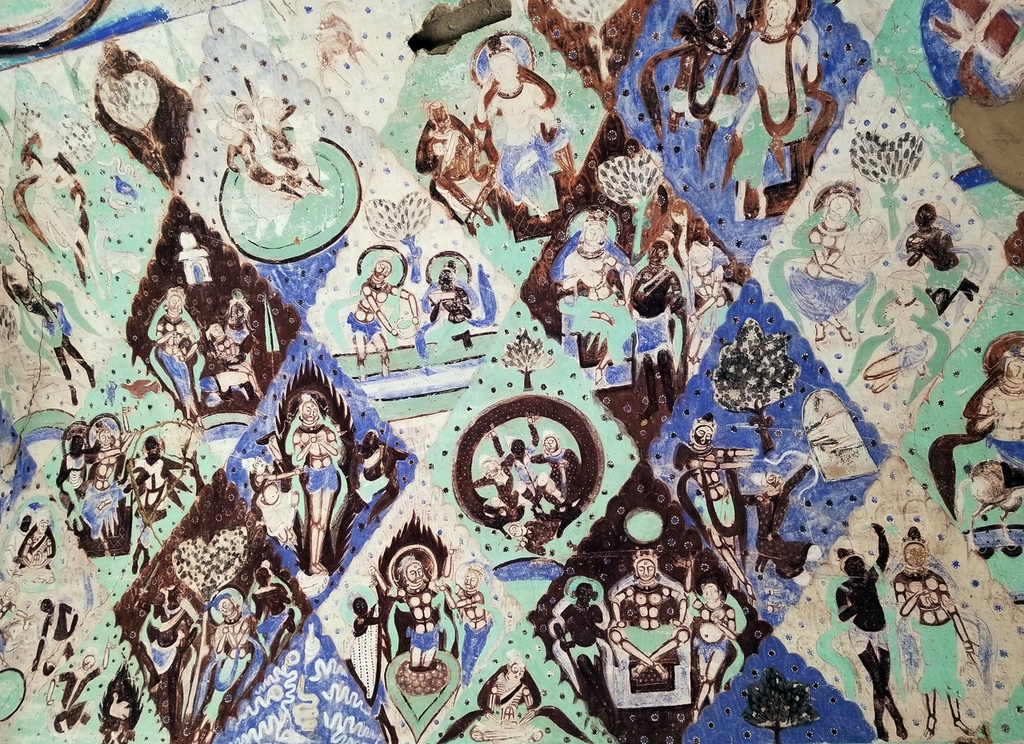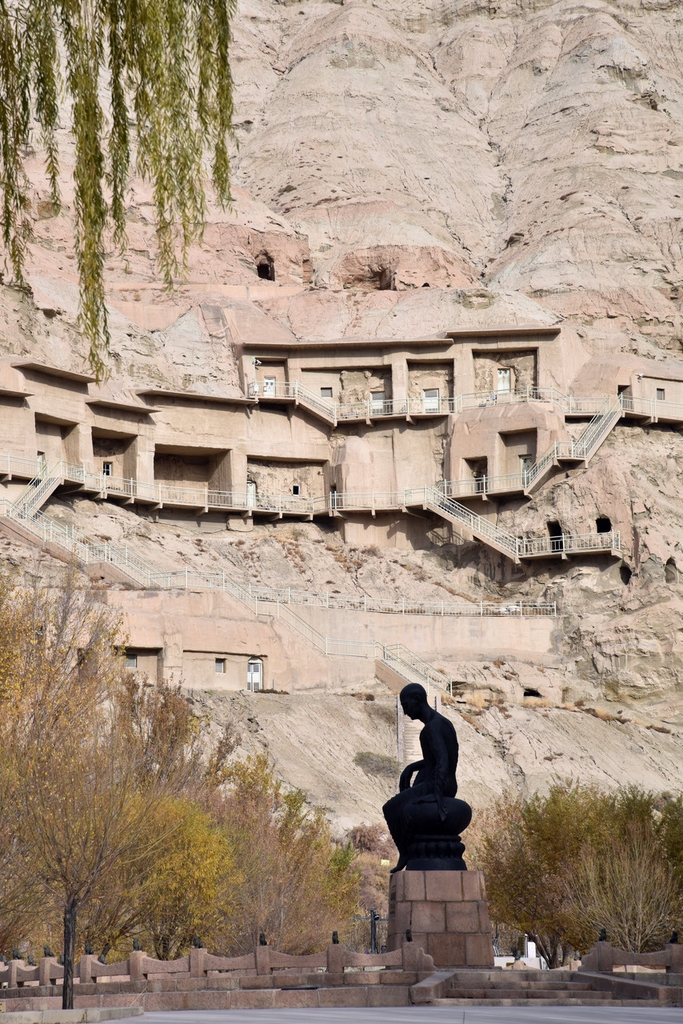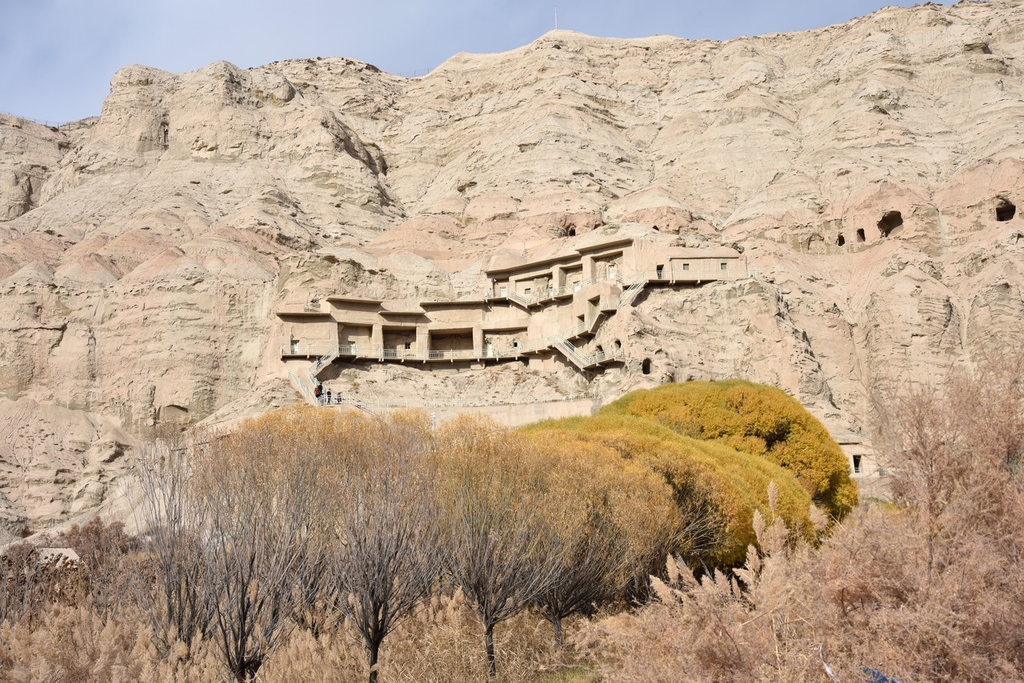
Some colorful Buddhist murals at the Kizil Grottoes in Xinjiang. /IC
Some colorful Buddhist murals at the Kizil Grottoes in Xinjiang. /IC

Some colorful Buddhist murals at the Kizil Grottoes in Xinjiang. /IC
Some colorful Buddhist murals at the Kizil Grottoes in Xinjiang. /IC

A statue of the Buddhist scholar and seer Kumarajiva (c. 344-413) sits in front of the Kizil Grottoes in Xinjiang. /IC
A statue of the Buddhist scholar and seer Kumarajiva (c. 344-413) sits in front of the Kizil Grottoes in Xinjiang. /IC

The Kizil Grottoes are located on the northern bank of the Muzal River, in Baicheng County, Xinjiang Uygur Autonomous Region. /IC
The Kizil Grottoes are located on the northern bank of the Muzal River, in Baicheng County, Xinjiang Uygur Autonomous Region. /IC
Located on the northern bank of the Muzal River, the Kizil Grottoes in Baicheng County, Xinjiang Uygur Autonomous Region, are a large complex of rock-cut Buddhist caves built between the 3rd and 9th centuries. The color of the rock lends the caves their name – "kizil" means red in the Uygur language.
The 10,000 square meters of frescoes and colorful sculptures in the complex reveal the history of Buddhism spreading eastwards from the western regions of China, and are generally regarded as representative cultural relics of the ancient Kucha state.
Known as one of China's "Four Great Grottoes," in a list that also includes the Mogao Grottoes in Dunhuang, the Yungang Grottoes and the Longmen Grottoes, the Kizil Grottoes form part of the extensive 2014 UNESCO-listed World Heritage Site known as the "Silk Roads: the Routes Network of Chang'an-Tianshan Corridor."